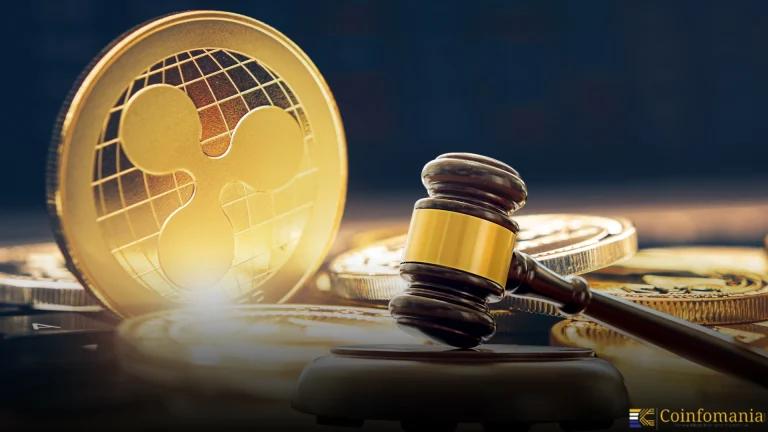Cryptocurrency Regulations in Tajikistan
Cryptocurrency in Tajikistan is still in a gray area; there is no direct ban on them, yet, there was no official legal recognition prior to 2025. The National Bank of Tajikistan has been continuing to enumerate the risks posed by digital assets with, among other things, financial stability or illicit use concerns but has not […]

Cryptocurrency in Tajikistan is still in a gray area; there is no direct ban on them, yet, there was no official legal recognition prior to 2025. The National Bank of Tajikistan has been continuing to enumerate the risks posed by digital assets with, among other things, financial stability or illicit use concerns but has not banned their use.
Meanwhile, a good part of the Ministry of Digital Technology is working hard on a coherent licensing regime, which suggests that some movement may soon be seen toward putting crypto-related businesses on a formal footing. The crux of the government’s tentative regulation is to mitigate the perceived risks while at the same time acknowledging the growing importance of technology in today’s world.
The absence of clear definitions of law and regulation has left operational uncertainty for market players, placing the crypto sector in Tajikistan in its transitory phase. Authorities are taking a cautious approach towards the policy, weighing risks and benefits in the coming years. These cautious steps can be a huge boon for introducing formal rules in the Tajikistan crypto space with clarity.
Historical Context
The inherent evolutionary nature of Tajikistan’s regulatory stance towards cryptocurrency has witnessed its important milestones. The following timeline points towards some pertinent happenings concerning crypto policy in the nation.
- 2018: The NBT issued warnings about crypto risks but did not impose a ban.
- 2021: The government explored blockchain applications but maintained restrictions on crypto payments.
- 2023: The Ministry of Digital Technology began drafting licensing rules for crypto businesses.
- 2025: Discussions continue on a potential Central Bank Digital Currency (CBDC) while crypto remains in a legal gray area.
The dynamic evolution of Tajikistan’s conservative approach toward digital assets can be characterized as a pendulum swinging between the realms of innovation and concerns over financial stability.
Regulatory Framework
Legal Status of Cryptocurrencies
- Cryptocurrencies do not fall into an illegal category, but owing to a lack of legal recognition, they thus cannot be considered as legal tender.
- The government prohibits them from being used as a form of payment or for the payment of salaries under a banner of high-risk assets.
Other Regulatory Authorities
- The National Bank of Tajikistan (NBT): Issues warnings and monitors risks to financial stability.
- Ministry of Digital Technology: Drafts crypto licensing frameworks
- Financial Monitoring Department (FMD): Enforces AML/CFT compliance
AML & CFT
- Tajikistan’s AML laws indirectly cover crypto, treating it as a potential tool for illicit finance.
- Exchanges and businesses may face scrutiny under existing financial crime laws.
Tajikistan’s Crypto Policies
Some actions have been taken by the government toward cryptocurrency activities, albeit with financial oversight. These policies imply a very careful regulatory attitude of Tajikistan toward digital assets.
Licensing & Compliance
- The Ministry of Digital Technology is developing a licensing system for crypto firms.
- Businesses may soon need approval to operate legally, with a focus on AML compliance.
Restrictions on Crypto Use
- Banned for payments: Crypto cannot be used to buy goods, services, or salaries.
- No official exchanges: The NBT denies plans for a state-backed crypto exchange.
These regulations reflect Tajikistan’s efforts to balance technological innovation with financial security concerns.
Tajikistan’s Approach to Crypto Innovation
Cryptocurrencies are a double-edged sword in Tajikistan, and the government has decided to take the middle path, offering answers to whether and how blockchain can be applied in the world of government while showing extreme caution about the use of private cryptocurrencies. The National Bank of Tajikistan is reportedly actively looking into ways of developing a digital somoni (CBDC) to show interest in sovereign digital currency options.
Various government agencies are trying to experiment with blockchain applications to enhance visibility in public systems, but they are careful not to exercise any endorsement of decentralized cryptocurrencies. Although there are official barriers to crypto payments, the peer-to-peer trade continues to flourish in the informal sense, showing that the public has an incessant interest in digital assets regardless of present regulatory gray zones. This way, Tajikistan benefits from distributed ledger technology while at the same time trying to lessen the “perceived” risks of unregulated cryptocurrencies.
Key Obstacles and Concerns
Tajikistan’s cryptocurrency sector faces several significant hurdles, with the evolving regulatory background. There are no clear legal definitions for cryptocurrency, mining operations, or DeFi that put businesses and investors in an extremely ambiguous situation. Banks are still reluctant to perform any transaction concerning crypto, resulting in a lack of banking services to legitimate operators.
Lack of comprehensive oversight has allowed dubious schemes and nonregulated platforms to thrive and expose investors to the risk. To make matters worse, limited public knowledge regarding the characteristics and risks associated with cryptocurrency exposes hundreds of thousands of participants to poor financial decisions. Such factors keep Tajikistan from developing a secure and transparent digital asset ecosystem.
Major Rule Shifts and Future Directions
The ever-changing features of the Tajik cryptocurrencies landscape are based on the approaches identified by regulatory authorities regarding future measures. This list can be of great importance for the country’s digital assets ecosystem over the next few years. The market is showing steady growth, with projections indicating $2.9 million in crypto revenue for 2025 and expected 5.35% annual growth potentially reaching $3 million by 2026, averaging $6.8 per user despite current restrictions.
- Licensing Framework Expected (2025-2026): The formal regulations for crypto businesses may be introduced.
- Stricter AML Enforcement: Higher levels of scrutiny on crypto transactions may be facilitated by the authorities.
- CBDC Pilot Possible: Tajikistan may test a digital somoni before fully regulating private crypto.
- Market Growth: The combination of regulatory evolution and persistent P2P trading activity suggests continued expansion of Tajikistan’s crypto sector.
Final Thoughts
Caution marks Tajikistan’s attitude toward crypto despite an obvious concern for risk and slow progress in the direction of regulation. While there is no outright ban, limitative payment rules and impending licensing regulations mold the market. Future moves such as a CBDC or formal crypto laws could wholly redefine Tajikistan’s digital asset scene.
FAQs
1. Is it legal to trade crypto in Tajikistan?
Cryptocurrency can fall under a legal gray area in Tajikistan and is neither banned nor recognized as legal. Warnings have been issued by the National Bank against cryptocurrencies, but private property and trading have not received a ban.
2. Are companies permitted to accept cryptocurrency payments?
Payment, salaries, and purchases of goods/services in cryptocurrencies lack legality according to Tajikistan law. Only the national currency, the somoni, is allowed for settlements for all transactions in Tajikistan.
3. Are crypto exchanges legal?
There are no licensed exchanges; however, P2P trading goes on informally. No plans for a state-run exchange are on the table for the government.
4. Is mining legal?
Mining regulation is not well defined and hence creates a lot of uncertainty. Authorities plan to probably address this issue in upcoming licensing frameworks (2025-2026).
5. What are the taxes on crypto earnings?
No specific tax rules exist yet. Profits could fall under general capital gains or income tax, pending clarification.
6. Are banks crypto-friendly?
Most banks restrict crypto transactions due to AML concerns. Few offer services to registered crypto businesses.
7. Is Tajikistan developing a CBDC?
The National Bank is researching a digital somoni, but no pilot has been announced yet.
8. Do businesses need licenses for crypto services?
The Ministry of Digital Technology plans to introduce licensing by 2026. Currently, no formal licenses exist for crypto-related operations.
9. Will regulations change soon?
The Ministry of Digital Technology may introduce licensing for crypto firms by 2026, with stricter AML rules.
10. Can foreigners invest in Tajik crypto projects?
No restrictions exist, but banking barriers complicate fiat transactions. Foreign investors assume full risk due to lack of protections.
Follow us on Google News
Get the latest crypto insights and updates.
Related Posts

Ripple Highlights Custody as Key to $18.9T Tokenized Assets by 2033
Shweta Chakrawarty
Author

Hong Kong SFC Issues New Custody Rules for Crypto Platforms
Shweta Chakrawarty
Author

South Korea and Vietnam eye $150B trade despite Trump tariff
Shweta Chakrawarty
Author